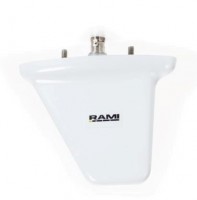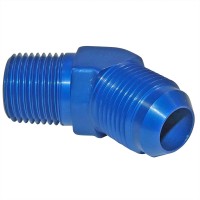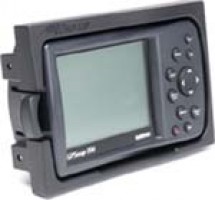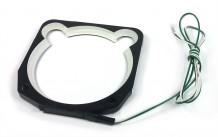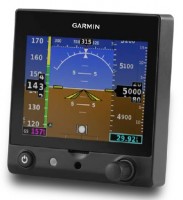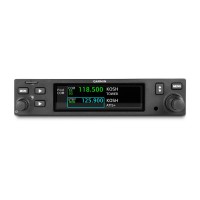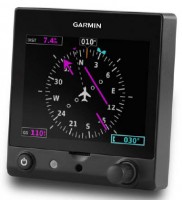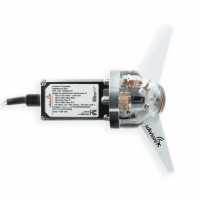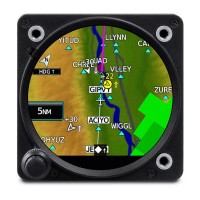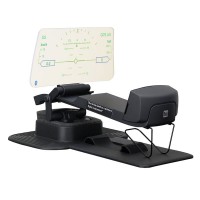Proximity Alert R5
MFR Model# R5
- JUMP TO
- Overview
- Documents
- Reviews
- Q&A
- View in Catalog
Overview
|
The R5 Proximity Alerter is a passive device which detects transponder replies of aircraft flying in your vicinity and displays simultaneously both altitude, estimated distance, code and vertical trend of up to three threats. The R5 system can monitor simultaneously up to 10 threat aircraft. It implements techniques similar to those found in more complex and expensive systems used by commercial aircrafts (TCAS for Traffic Collision Avoidance System). Basically your transponder replies to two kinds of interrogators : Ground radar sensors and airborne TCAS anti-collision system.
Ground radar sensors asks for both your code and altitude. Your on-board transponder replies by providing both the code and altitude if set to ALT mode or only your code. As we all acknowledge it is frequent to forget to set this mode ... Not a limitation for the R5 system which is designed to detect aircraft even if its transponder is in Mode A only mode. It will display the aircraft code and distance but no altitude information and no vertical trend whatever vertical range you set. Not all devices available in the market monitor Mode A only threats. TCAS anti-collision systems are mostly interested by your altitude and your distance. Thanks to a complex arrangement of antenna they can provide information about the threat azimuth. Obviously this kind of set-up is not easy to install on a small GA aircraft and rather expensive to acquire. Once a threat identify these sophisticated systems coordinate actions to be taken by the converging traffics to avoid a collision. Portable proximity alerters found on the market will not provide such guidances because they are purely passive and no communication occurs between them. To overcome this limitation at ProXalert we do think that affordable proximity alerter must provide you with as much information about threat traffic as the technology allows.This information must be delivered in a very organized way and simple to read because you are a busy pilot and not an Air Traffic Controller. The R5 is the only affordable system to display threat codes. Some will say this information is luxuous, but when you get use to it your will never flight without. Let's illustrate this advantage thru some real life examples :
Most of us fly in metropolitan areas where traffic is heavy. It is therefore more and more frequent to fly surrounded by fellow pilots. A modern proximity alerter can't anymore afford to provide information about a single threat unless you only fly cross country. A threat could pop up in very few seconds and replace the one you was trying to locate, this is a very disturbing situation. With the R5 you get the three closest threats. They are automatically ranked by altitude or distance proximity. (Programmable thru menu) The R5 displays the altitude in MSL or signed relative to you altitude thanks to the built-in altimeter. You have more time to locate the threats because you get a global picture of the surrounding environment. Less stress is more safety. The R5 can detect aircraft even if they are very near. Some devices use your on-board transponder to get your altitude and therefore can't see traffic when they are too close due to the risk of mixing up radar replies. (> 0.25 Nm). 0.25 Nm means 1400 ft. So if you set a vertical range of less than 1400 ft, a traffic closing from below may not be seen by these devices. Having a traffic just above or just below is one of the worst situation for visual identification. Depending on the season and weather forecast the pressure could be very high. The R5 system is designed to accomodate this situation keeping its best accuracy. Whatever the mode you set absolute MSL or relative it will display a valid information by doing the proper math. Some devices assumes pressure is always above 29.92, therefore they display smaller vertical separation in this case when threat fly below you at low altitude. This could create a stressing situation. For those who still continue to search for flying objects after their flight, we included a special ground mode to monitor traffics as a radar station does. You set the vertical range to Unlimited and the horizontal to 10 Nm and you catch traffics flying at up to 44, 000 feet, included cruising airliners. The Cruise Altitude Alerter : As we were on our way to pack more functions into this tiny package we think that providing a cruise altitude alerter will satisfy a large portion of our customers. How it works ? First of all you will have to set the range tolerance in the MENU to matching your actual flight condition. The range tolerance could be set from 300 feet to 500 ft by 100 ft increment. In most case 300 feet will be a good choice. You can set it once forever since the R5 memorizes its last configuration in a non-volatile memory. In flight the R5 will monitor your current MSL altitude thanks to its built-in altimeter and will send a warning if you exceed the limits of the range tolerance. A suggesting audio beep sequence will tell you to climb or descend. At the same time a visual 'advice' will be displayed in the cruise altitude alerter status portion of the display. A set of three arrows pointing up or down will suggest to climb or descend. Upon reaching of your cruise altitude press the SCA blue button, the R5 memorizes and displays your current MSL altitude for three seconds then displays the signed difference between your current altitude and the target you previously set. If you decide to change to another cruise altitude you simply have to press this same SCA blue key to disable the cruise altitude alerter. When reaching your new cruise altitude press the SCA button to re-activate it. Simple ! The A/C transponder tester : The R5 system monitors threat aircrafts transponder but what about yours ? Knowing that your transponder sends accurate information will further increase your safety. TCAS and other proximity alerter will report proper information to their crew. Reduce the horizontal range up to displaying a 'X' as the H range and the R5 will display both your code and altitude. It is a good practice to include this task during the first minutes of your flight. Always revert to normal horizontal range upon completion of this test. If you are 'covered' by radar when still on ground we recommend to perform this test before taxiing. The very low power consumption of the R5 (1 watt typical) is particularly well suited for usage in glider and superlight vessels. The unit accepts input voltage from 6 to 16 volts allowing operation from a small solar panel. |
WARNING: Cancer and Reproductive Harm - www.P65Warnings.ca.gov. |
Documents
- User Manual (PDF)
Reviews
Sad we do not have the ADS-B service in Canada as they are having in the USA. This device is probably the next best thing although it cannot compare with ADS-B. It receives transponder responses to radar inquiries. While it does not provide the direction to look for, it does provide an indication of distance, altitude and trend of the traffic. Still need to look outiside but when this identifies traffic, I pay even more attention and if I cannot see it, I will report my position and intentions.
I have had this unit for about 7 years and have always been very satisfied with it's performance. The Proxalert has always kept me well warned of any impending traffic situations before ATC calls them out and has even warned me of traffic ATC did not call out.
Q&A
Please note, Aircraft Spruce's personnel are not certified aircraft mechanics and can only provide general support and ideas, which should not be relied upon or implemented in lieu of consulting an A&P or other qualified technician. Aircraft Spruce assumes no responsibility or liability for any issue or problem which may arise from any repair, modification or other work done from this knowledge base. Any product eligibility information provided here is based on general application guides and we recommend always referring to your specific aircraft parts manual, the parts manufacturer or consulting with a qualified mechanic.
Unit detects traffic whatever their azimuth is. It provides threat estimated distance, its altitude (mode A/C transponder)and threat squawk code.
Proxalert R5 is powered from aircraft cigarette lighter plug. It comes with a lighter accessory covering both 12v and 24v systems.
The Proximity Alert R5 does not interface with third party hardware.
No, this unit does not use ADS-B for detecting traffic.
As this unit is not TSO'd we do not recommend installing this in a certified aircraft.
The horizontal range of the Proxalert R5 is 10nm. The vertical range is 40,000 feet.
No antenna is required for the Proxalert system.
This device shows the altitude and distance from other traffic in Estimated Nautical Miles (Enm). That would be the 'E' you see on the right side of the screen.
Yes, a transponder is required for the Promixity Alert R5 to work.


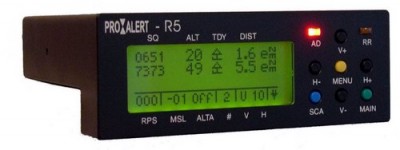





 FREE Shipping
FREE Shipping
